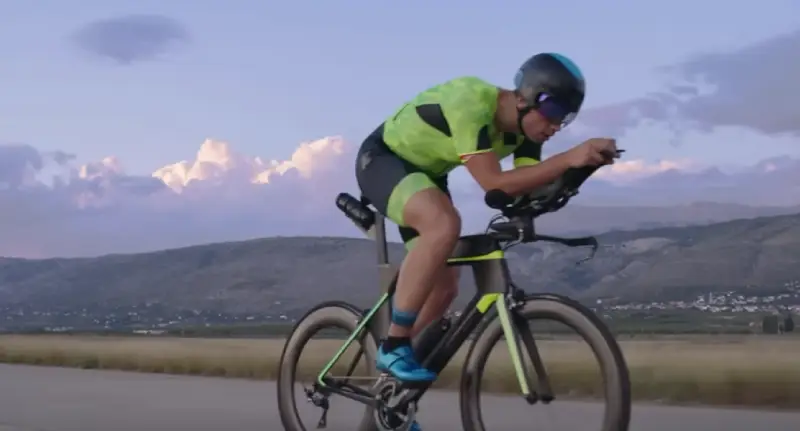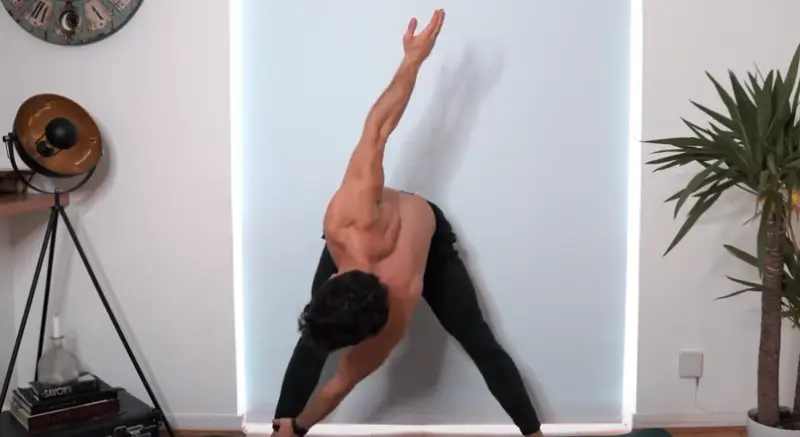Twitching can weaken your grip on the handlebars, increasing the risk of accidents, especially on rough or uneven terrain. Repetitive strain from long rides can lead to muscle fatigue and twitching, potentially escalating to more severe conditions like tendinitis or muscle tears.
Prolonged cycling can strain arm muscles, leading to involuntary twitches. Pressure on nerves from handlebars or improper posture may cause twitching. Dehydration or low electrolyte levels can trigger muscle spasms. Muscle twitching is often felt in the calves, thighs, and biceps after cycling, as these areas are put under the most strain.
In this blog post, Common Reasons My Arm Twitches While Cycling and effective solutions will help you stop your arm twitching while riding a bike.
Why Is My Arm Twitching While Cycling? 8 Real Reasons

Arm twitching while cycling can be a perplexing and issue many cyclists encounter. It is crucial to understand the reasons behind this phenomenon so that we can address it discomfort and optimize your cycling experience. Here, we delve into some prevalent factors that may contribute to arm twitching while cycling:
Muscle Fatigue
Prolonged cycling can lead to muscle fatigue in the arms, especially if you’re holding a constant grip on the handlebars or maintaining a specific riding position for an extended period. Fatigued muscles may twitch involuntarily as they struggle to maintain control.
Nerve Compression
Poor bike fit or posture can compress nerves in the arms, causing sensations like tingling, numbness, and twitching. Nerve compression, such as ulnar nerve compression (handlebar palsy), is common among cyclists and can cause arm twitching during rides.
Overuse Injury
Repetitive cycling movements, such as gripping the handlebars tightly or leaning heavily on the arms, can lead to overuse injuries. Tendinitis or arm muscle strains may manifest as twitching sensations, signaling muscle strain or irritation.
Poor Ergonomics
Incorrect handlebar position, grip style, or bike fit puts pressure on the arms, contributing to discomfort and twitching while cycling. Improper ergonomic setup increases the risk of arm-related issues during rides.
Dehydration or Electrolyte Imbalance
Inadequate hydration or electrolyte imbalance can affect muscle function and lead to twitching or spasms while cycling. Electrolyte balance and hydration are key to maintaining optimal muscle performance and preventing twitching sensations.
Underlying Health Conditions
Arm twitching while cycling could be a symptom of underlying health conditions such as nerve disorders, neurological issues, or electrolyte abnormalities. If arm twitching persists or is associated with other symptoms, see a doctor for evaluation and diagnosis.
Stress or Tension
High levels of stress or tension, whether related to cycling performance, external factors, or muscle tightness, can trigger arm twitching during rides. Relaxation techniques, proper warm-ups, and stress management strategies may help ease arm twitching caused by tension.
Inadequate Warm-Up or Cool-Down

Skipping proper warm-up or cool-down routines before and after cycling sessions can contribute to muscle stiffness, reduced blood flow, and increased risk of twitching. Incorporating dynamic stretches and gradual cooldown activities may help prevent arm twitching because of abrupt changes in muscle activity.
8 Effective Solutions for Resolving Arm Twitching While Cycling
Arm twitching can sometimes disrupt your ride and affect your overall experience. If you’ve encountered this issue, fret not, as there are solutions to help ease arm twitching and enhance your cycling comfort. Several effective strategies exist to help you control arm twitching while cycling, including:
- Rotate Hand Positions: Rotating your hand positions on the handlebars can disperse pressure across your arm muscles and reduce fatigue.
- Relax Your Grip: Consciously relax your grip on the handlebars to ease tension in your arms and wrists. Avoid gripping too tightly, allowing for a more natural and relaxed posture that can help prevent muscle strain and twitching.
- Proper Bike Fit: Ensure your bike is fitted correctly to reduce arm strain. Adjust handlebar height and position to promote a more natural arm alignment and minimize unnecessary tension.
- Relaxation Techniques: Practice conscious relaxation of your grip and arm muscles while cycling. Avoid gripping the handlebars too tightly and periodically shake out your arms to release built-up tension.
- Strength and Flexibility Training: Incorporate exercises targeting arm muscles and flexibility to improve endurance and reduce the risk of twitching. Strengthening your upper body can enhance stability and control during rides.
- Regular Stretching: Prioritize stretching before and after cycling to loosen tight muscles and improve circulation. Focus on stretches that target the arms, shoulders, and upper back so you don’t get stiffness.
- Hydration and Nutrition: Stay hydrated and maintain adequate nutrition to support muscle function and prevent electrolyte imbalances. Dehydration can exacerbate muscle twitching, so drink water regularly during rides.
- Rest and Recovery: Rest and recover between rides to prevent overuse injuries and muscle fatigue. Listen to your body’s cues and take breaks to avoid straining your arms excessively.
Conclusion
Arm twitching while cycling can result from various factors, ranging from muscular fatigue to underlying health conditions and even stress. However, with the right approach, this issue can be managed and even prevented.
Implementing solutions such as adjusting your bike fit, maintaining proper hydration, and ensuring adequate warm-up and cool-down routines can significantly reduce the risk and occurrence of arm twitching. Remember, listening to your body’s cues and giving it rest and recovery time is crucial for a healthier and more enjoyable cycling experience.
FAQs
When Should I Seek Professional Help For Arm Twitching During Cycling?
If arm twitching persists despite adjustments or is accompanied by pain or numbness, consult a healthcare provider or bike fitting specialist to address potential underlying issues.

![8 Common Reasons for My Arm Twitching While Cycling [8 Effective Solutions]](https://cacyclinghub.com/wp-content/uploads/2024/07/Why-Is-My-Arm-Twitching-While-Cycling-1-e1722056808962.webp)
